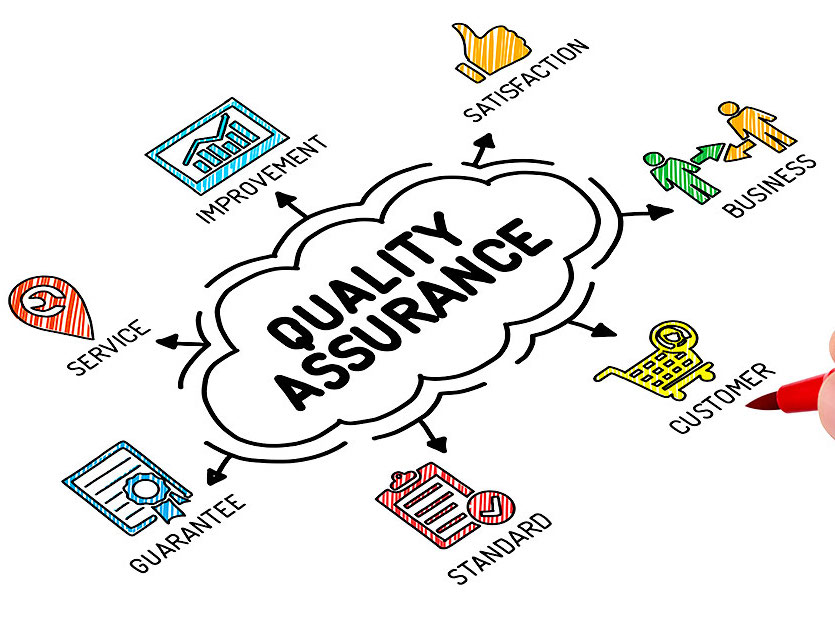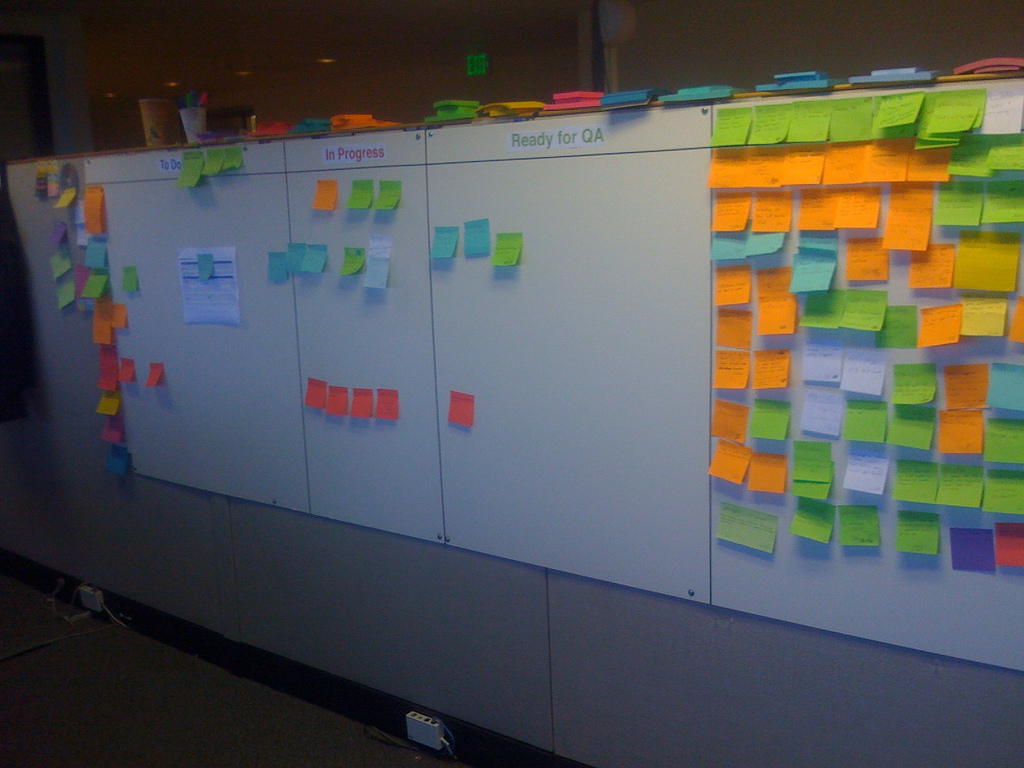Agile Development is a popular methodology that is focused on designing a product little by little with established short term deadlines. With this method, developers don’t spend long time working on a big project through a sequence of planned stages. The team works in an iterative process of small projects called iterations or sprints, and they look after the constant improvement of the product until it’s ready for launch.
To begin, developers define a general idea. They prioritize the features that the product should include to satisfy the basic needs of the client and final user. Then, the first prototype is presented and tested, the feedback is used to make adjustments to deliver a better product on the next sprint. After that, the team repeats this process to make the prototype a real success in the market.
Where did the idea for agile development come from?
The history of Agile Development begins in the early 1990s with “the application development crisis”. At that time, IT industry experts noticed that businesses started to move faster and change constantly. They realized that projects took a lot of time to meet the final objectives. Sometimes they didn’t deliver the benefits predicted or even worse, they were cancelled before the product was finished due to budget and time issues.
The habitual development techniques weren’t useful anymore and that was a problem. Principally, they needed to get rid of the “waterfall” model that consisted in a sequential process with a document trail. This model include 5 stages: planning, design, testing, implementation and maintenance, and teams had to complete one stage fully before moving to the next one.
In February 2001, seventeen software consultants and thought leaders in software development, gathered in Snowbird, Utah and decided to replace the traditional methods with Agile. This group included Kern, Extreme Programming pioneers Kent Beck and Ward Cunningham, Arie van Bennekum, Alistair Cockburn, and twelve others, all well known today in the agile community.
This group defined what is now known as Agile Development and established “The Agile Manifesto” that included these 4 core values:
- Individuals and interactions over process and tools.
- Working software over comprehensive documentation.
- Customer collaboration over contract negotiation.
- Responding to change over following a plan.
These values define the philosophy of Agile and they are the key to increase productivity in software development. Agile methodology include techniques that can be powerful for any startup or software company and you can try to implement it considering the next pros and cons.
PROS
- Build working software and deliver it to the user faster
- Get immediate on the software’s scope and direction
- Respond effectively to changes in requirements
- Facilitate interaction and communication of the development team
- Release a final product with fewer defects
CONS
- Hard to predict timelines and budgets
- Unable to make certain and concrete planning
- Have consuming frequent team meetings
- Unable to satisfy product expectations because due to constant feedback
The objective of Agile methodology is to develop a product faster and closer to the client and user needs. It’s a process that constantly adapts to new changes and requirements to pursue the best quality for the final delivery. It encourages the team to work side by side with the client and focus the developing process in effective communication and rapid response. Agile Development includes different techniques that can improve your business, however, you need to be aware of the cons to manage efficiently the blocking situations that come up. If you want your startup or software company to achieve its production goals in shorter time, you can adapt the Agile principles to your internal processes and prepare your team to embrace its benefits.






